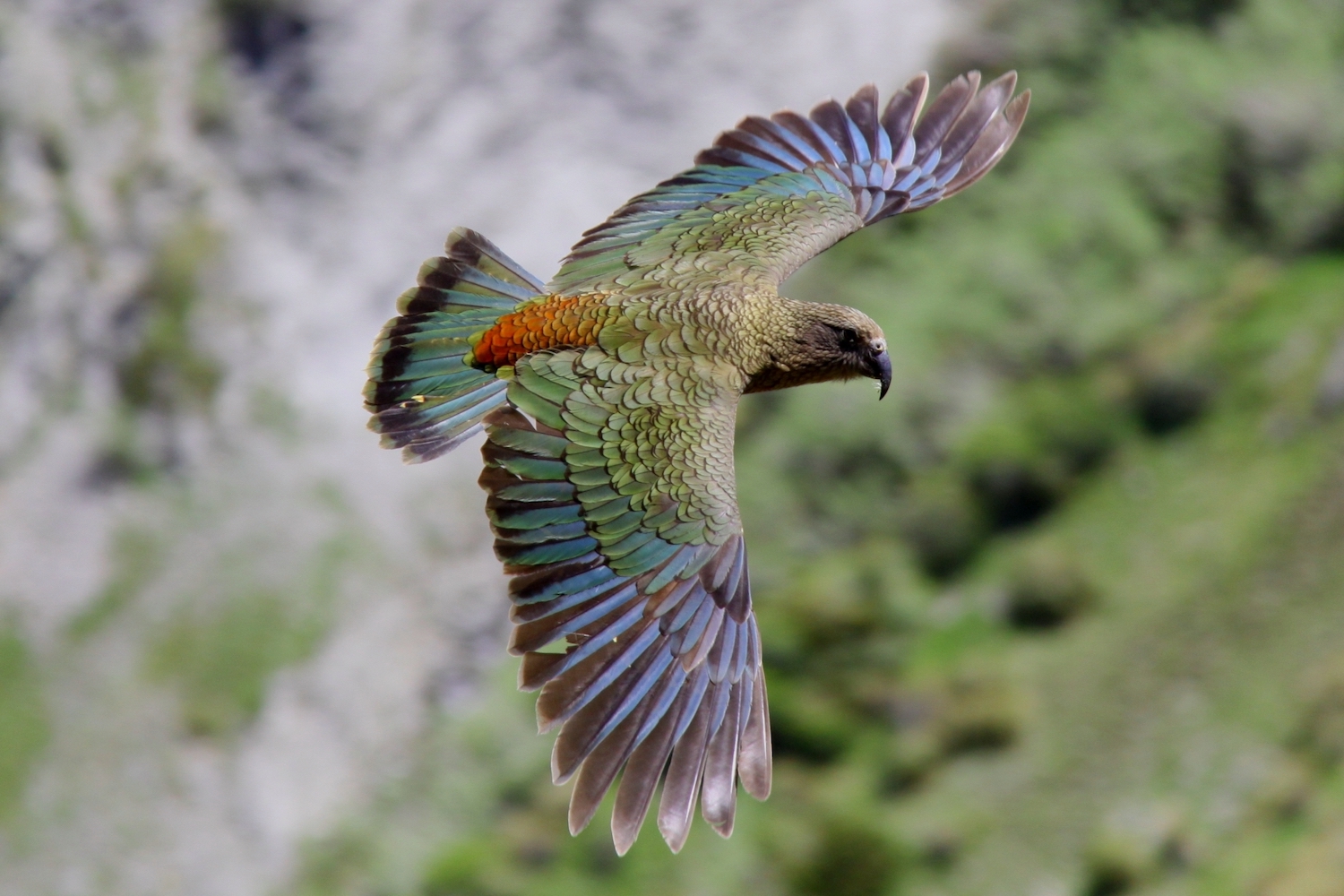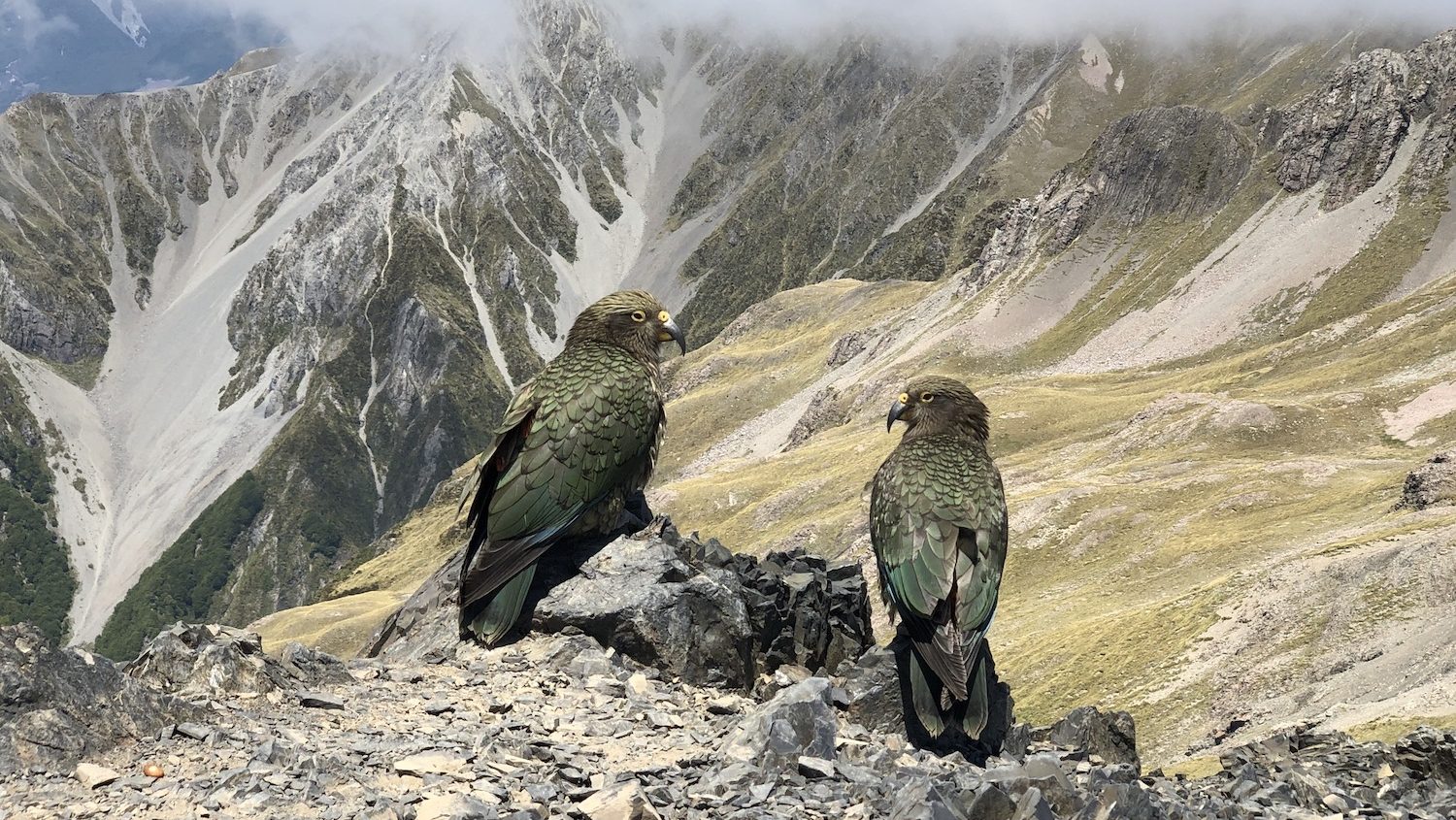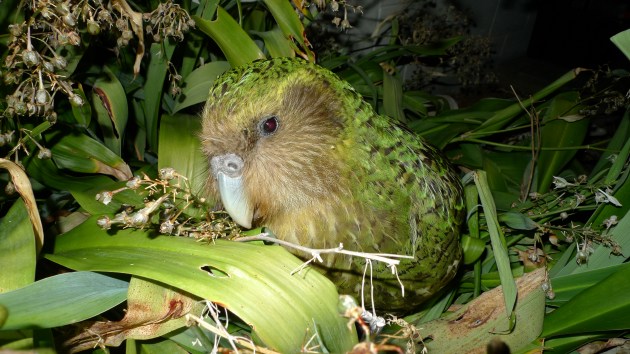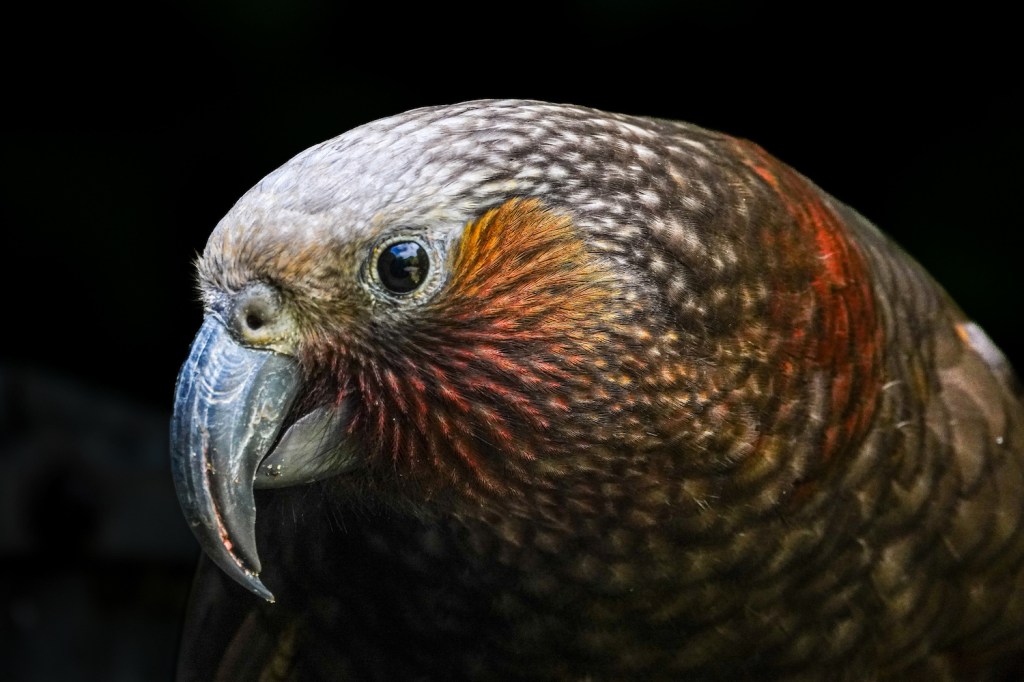Asking a birder to name their favorite species is like asking a parent to pick their favorite child. For most of us, it’s an impossible task. But if you ask me to name my favorite type of bird? Well then, things get a bit easier.
I’ll be the first to admit that I’m absolutely besotted with parrots. They’re colorful and charismatic, but also strange, secretive, and highly adaptable.
There are about 400 species in the order Psittaciformes, mostly found across the tropical and subtropical regions of the world. Some nest in termite hollows (the golden-shouldered parrot), others drum to a percussive beat (the palm cockatoo), and others sleep hanging up-side down (the blue-crowned hanging parrot).
But then again, not all parrots live in the tropics. New Zealand is home to a small handful of endemic parrots, all of which can hold their own against the more famous macaws and cockatoos of the world. Read on to learn more about these unusual parrots at the bottom of the world, from the nocturnal, flightless kākāpō to the mischievous alpine kea.
Top 10 List
-
Kea: The World’s Only Alpine Parrot
Nestor notabilis

A kea in flight. © Mark Fraser / iNaturalist Kea are the court jesters of the parrot world. These garrulous parrots are found only on the South Island, where they live in the alpine beech forests and snowy peaks. (You read that right, parrots in the snow.) They’re a stocky bird, with muted olive-green plumage and a vibrant orange under-wing that’s visible in flight. They use their large, curved bill to feed on roots, leaves, berries, nectar, and insects. They’re also known to scavenge carrion on occasion.
Among the other New Zealand parrots, kea are best known for their intelligence and cheeky, inquisitive nature. Behavioral researchers have found that kea can use tools, solve puzzles, and work cooperatively with other keas. (Incidentally, the common noun for a group of birds is a conspiracy of kea. Perfection.) Kea are also capable of impulse control, planning for the future, and observational learning.

Tourists frequently report birds investigating their backpacks and ski gear, and even thieving small items left unattended. Kea have learned to turn on campground water taps, and use tools to steal bait from predator traps. And a particularly naughty bird once locked a hiker inside a remote backcountry toilet.
Unfortunately, these fabulous birds are endangered, with only about 1,000 to 5,000 remaining in the wild. European settlers often shot kea on sight, believing that the birds attacked sheep. The species was also subject to a government bounty until 1971, with farmers earning a monetary reward for each beak they turned in. The birds also suffered from the introduction of feral predators. Kea nest in burrows and the crevices of tree roots, where their chicks are vulnerable to feral stoats and cats. Today, the birds are protected and are subject to major conservation efforts by the New Zealand government.
-
Kākāpō: New Zealand’s “Night Parrot”
Strigops habroptilus

Kakapo are one of only two nocturnal parrots, and the world’s only flightless parrot, too. © Oscar Thomas / iNaturalist Kākāpō — Maori for night parrot — are absolute oddballs, unique in just about every aspect of their biology and behavior. They’re the world’s only flightless parrot: Instead of soaring through the air, they use their strong feet and beaks to clamber across the forest floor and climb up trees. They’re also the world’s chonkiest parrot; males weigh nearly 5 pounds. And the superlatives don’t stop there. Kākāpō are one of the longest-lived parrots, too, with some birds estimated to reach 90 years of age.
The species was once found throughout New Zealand, before being nearly wiped out by feral predators. All of the world’s surviving kākāpō — fewer than 250 birds — now live on predator-free offshore islands. Aside from predators, the kakapo’s main problem is that they aren’t exactly prodigious breeders. Birds don’t reach sexual maturity until they’re near 5 years old, and they only reproduce when a specific species of tree, the rimu, fruits en-mass every two to four years. Their odd courtship behavior doesn’t help, either.

Sirocco the kakapo looks for love in all the wrong places. Photo © Department of Conservation / Flickr To demonstrate their reproductive fitness, male kākāpō toddle up a mountain, dig a hole in the dirt, and then “boom” into it for up to 8 hours straight, each night, for up to three months. These low-frequency calls can travel up to 5 kilometers. Upon hearing this enticing serenade, female kākāpō have to clamber through the forest (again, they can’t fly) and up the mountain to find the males. This display behavior, called lekking, is common in the bird world, but kakapo are the only lek-breeding parrot. Ridiculous at the best of times, this mating strategy is especially ineffective when there are only about 100 birds left. So the Kākāpō Recovery team started a captive breeding program to help bolster genetic diversity and conserve the species.
Perhaps my favorite kakapo anecdote: One wild (but hand-raised) kākāpō, Sirocco, developed an unfortunate habit of attempting to mate with people’s heads. (Don’t believe me? Watch filmmaker Mark Carwardine get “shagged by a rare parrot” as actor Stephen Fry looks on.) Trying to make the best of an awkward situation, scientists improvised a special helmet that would collect Sirocco’s semen. Unfortunately, Sirocco prefers seducing helmet-free heads, and he now receives special behavioral training to teach him to redirect his urges toward a stuffed owl puppet.
-
Kākā: From the Forests to the City
Nestor meridionalis

Two kaka photographed on the Routeburn Track, in New Zealand’s Fiordland region. © Mark Whatmough / Wikimedia Commons If you’ve ever heard a kākā call, you’ll immediately understand how the bird got its name. It’s thought that the Maori named this species after its loud “ka-aa” vocalizations. These large, colorful birds are found across both the North and South Islands, preferring forested habitats. New Zealand once had two other species of kākā: the Norfolk kākā and the Chatham kākā both of which are now extinct.
Kākā came under threat from both feral predators and also habitat loss. The large birds need equally large tracts of large tracts of forest to survive. Deforestation from agriculture and the timber industry have reduced much of their habitat, as has browse by introduced possums, deer, and pigs. Kākā also compete with non-native species for food. Even invasive wasps are a problem, because they compete with kākā for honeydew, a sugary substance excreted by scale insects, which is an essential part of the bird’s diet.
Populations of North Island kākā are recovering, thanks to large-scale predator control efforts. They’re often seen around the Wellington suburbs, having spread out from a local predator free sanctuary into the surrounding neighborhoods. (Wellingtonians report the birds hanging off of clotheslines, rifling through their gardens and sometimes nesting in roof cavities.) Birds on the South Islands are still considered vulnerable. Recent efforts have seen captive-bred birds reintroduced to parts of their historic range, including Abel Tasman National Park.
-
Kākāriki: Multiple, Multicolored Parakeets
Cyanoramphus sp.

A critically endangered orange-fronted kākāriki, photographed on New Zealand’s South Island. © mannac / iNaturalist Kākāriki, which means “small green parrot,” is the Maori name for five species in the Cyanoramphus genus. Three of those birds live on mainland New Zealand: the yellow-crowned parakeet, red-crowned parakeet, and the orange-fronted parakeet. Two others, the Chatham Islands parakeet and the Antipodes parakeet, live on offshore islands about 500 kilometers (>300 miles) away from the mainland.
The three mainland kākāriki all have deep green plumage, with blue on the inner wing, and a splash of color on their foreheads. As you can probably guess from their names, the color of these patches — yellow, red, and yellow-orange — are the best way to tell the kākāriki species apart.
Like many of New Zealand’s birds, all three are threatened by invasive predators. The orange-crowned kākāriki is the most at risk, and is considered critically endangered. They’re only found in a handful of locations on the South Island, notably Brook Waimārama Sanctuary (also home to powelliphanta snails and tuatara) and Blumine Island, both of which are free from predators.




Proud to learn the Kaka is thriving because of food station with my Harrison’s Bird Food nuggets supplied by Dr Turner a local veterinarian.
Really enjoyed learning so much Good detail and I am surprised and sad at the same time. Thank you for the awareness
What about the eastern parakeet